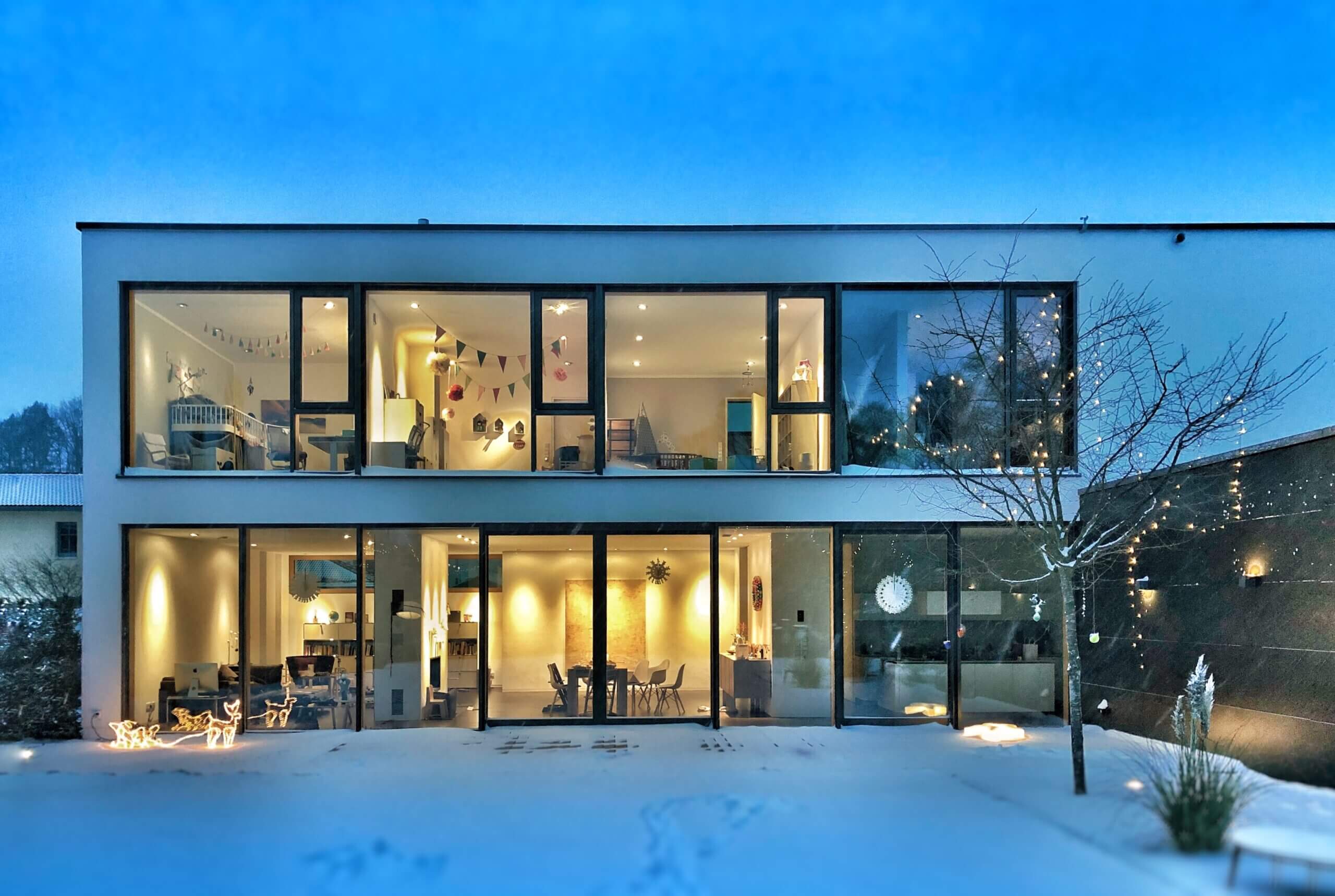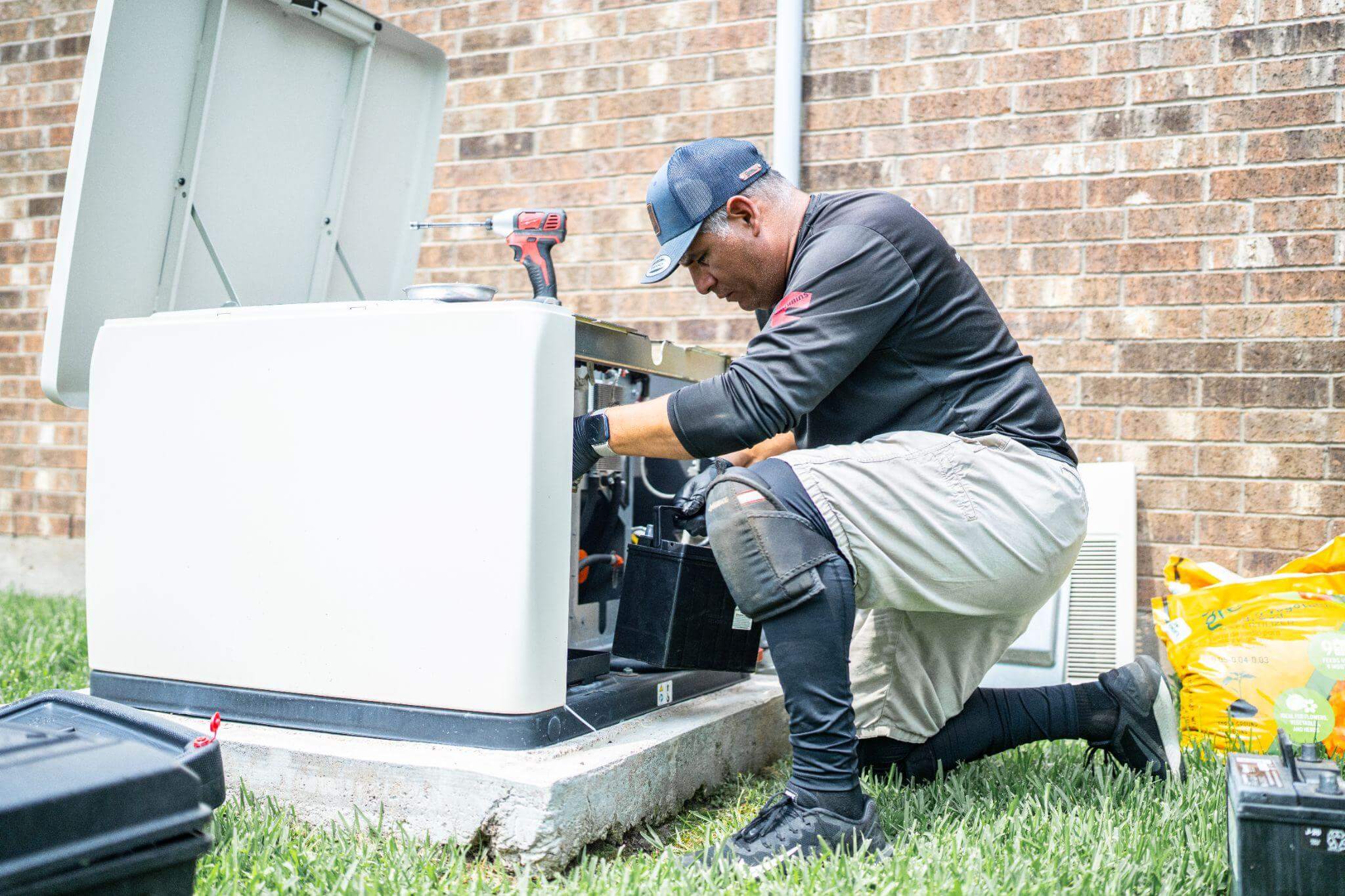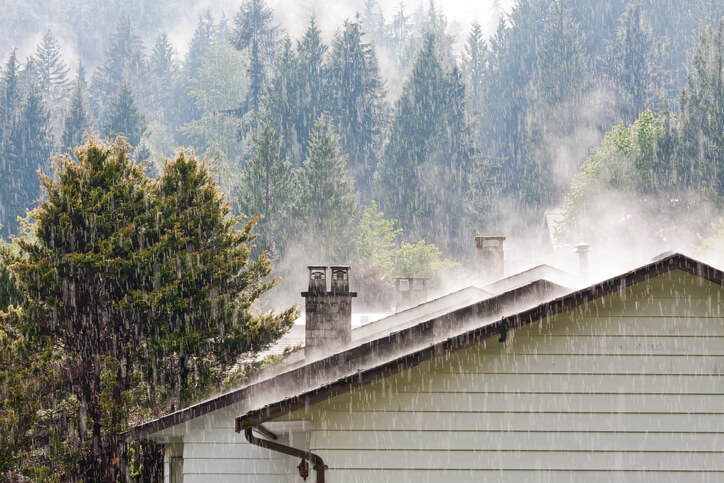Are you doing a roofing project?
Modernize can pair you with three to four pros in your area, so you can compare options and save time and money.
Flat roofs—known for being stylish, modern, and efficient—hit a lot of items on your home bucket list. But they also come with a reputation for leaks, cracks, and collapse. While not frequent, per se, the low slope of a flat roof does make it more prone to certain problems, particularly when it interacts with the elements. Excessive rain, heavy snow, and built-up ice all pose extra challenges for flat-roofed homes.
Unlike pitched roofs, low-slope buildings don’t have the benefit of gravity working in their favor to remove precipitation off the surface. Instead, flat roofed houses must rely on effective drainage systems and strong building design to prevent leaks and other damage. Here are all the ways winter weather affects your flat roof—and how you can prevent problems down the line.
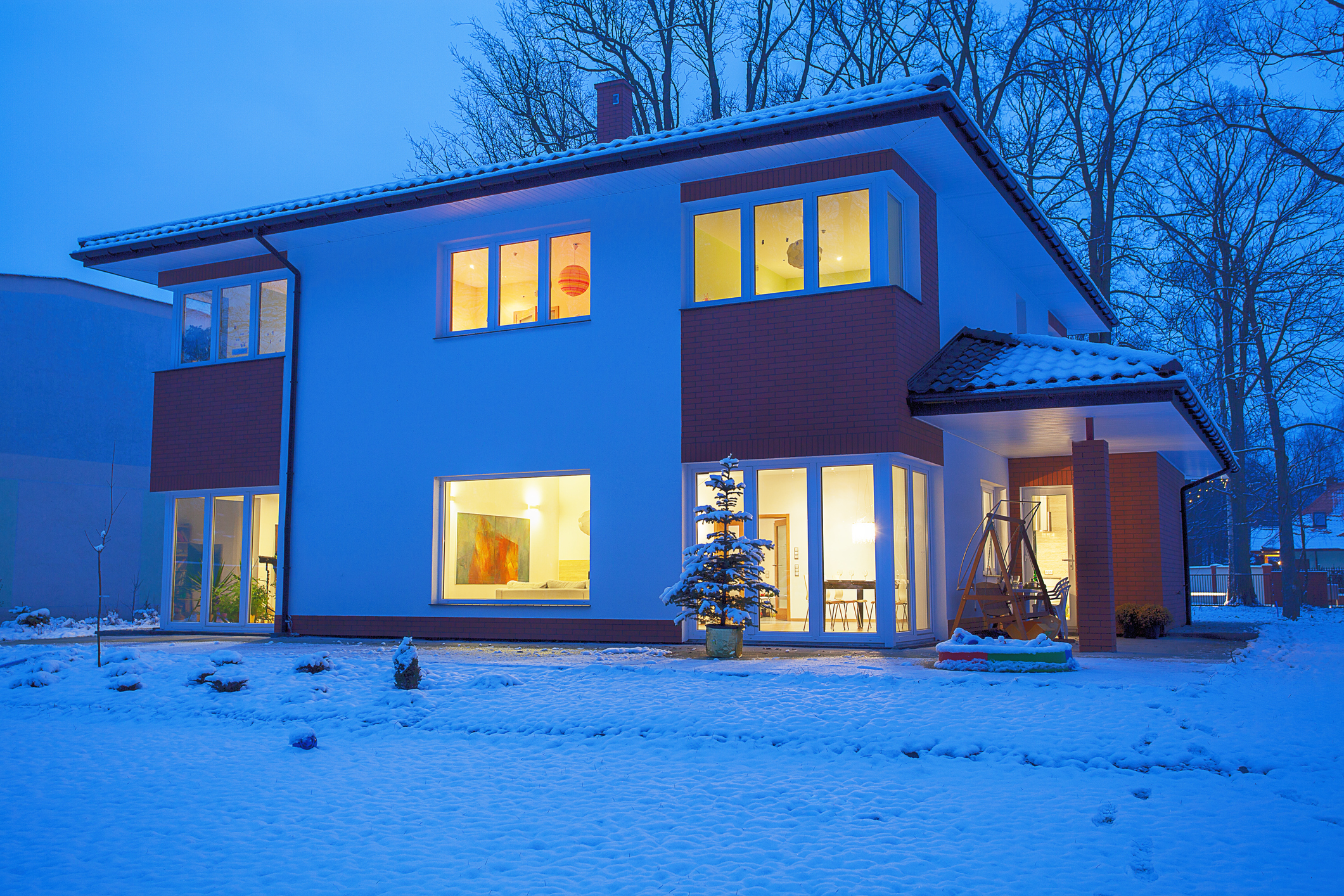
Your Installer Should Have Experience With Flat Roofs
Because flat roofs require specialized materials and construction methods, any roofer you choose to work on yours should have a large resume of past work on flat roofs. For instance, a worker who doesn’t have a lot of experience with flat roofs may not understand how to apply waterproof sealants. Often, the end result is tiny pinhole-sized punctures in the seal, which—although small—can do a lot of damage.
In fact, a lot of the time when a flat roof starts leaking, the root of the problem is one of these tiny puncture marks. Hiring a professional who knows their stuff will save you this potential headache—good news if you live in a wet or snowy climate.
Leaves Can Clog Gutters, Resulting in Pooling Water on Your Roof
Every home relies on its gutters. They help with roof snow removal and rainfall by funneling it away from your roof and siding. But in flat roofed homes, they’re extra important.
If your drainage system isn’t functioning well, it can cause water to pool on the top of the roof. That’s a problem for a couple of reasons. First, it makes you more prone to leaks. For another, it adds weight to roof surfaces—and water isn’t exactly light.
Lastly, standing water can wear down your roof’s membrane, meaning you’ll have to make repairs—or even replace your whole roof—more frequently.
This problem is best solved with an ounce of prevention. All you need to do is maintain your gutters. Clean your gutters and scuppers out with a trowel and hose at least twice a year—or even more frequently if you experience bad storms.
Find the Right Contractor for Your Roofing Project
Whether you’re ready to begin your project now or need some expert advice, our network of contractors are here to help. With a few simple questions, we’ll find the best local professionals for you
You can also sweep your roof off with a broom. This will keep your drains free and clear and your home looking nicer, too!
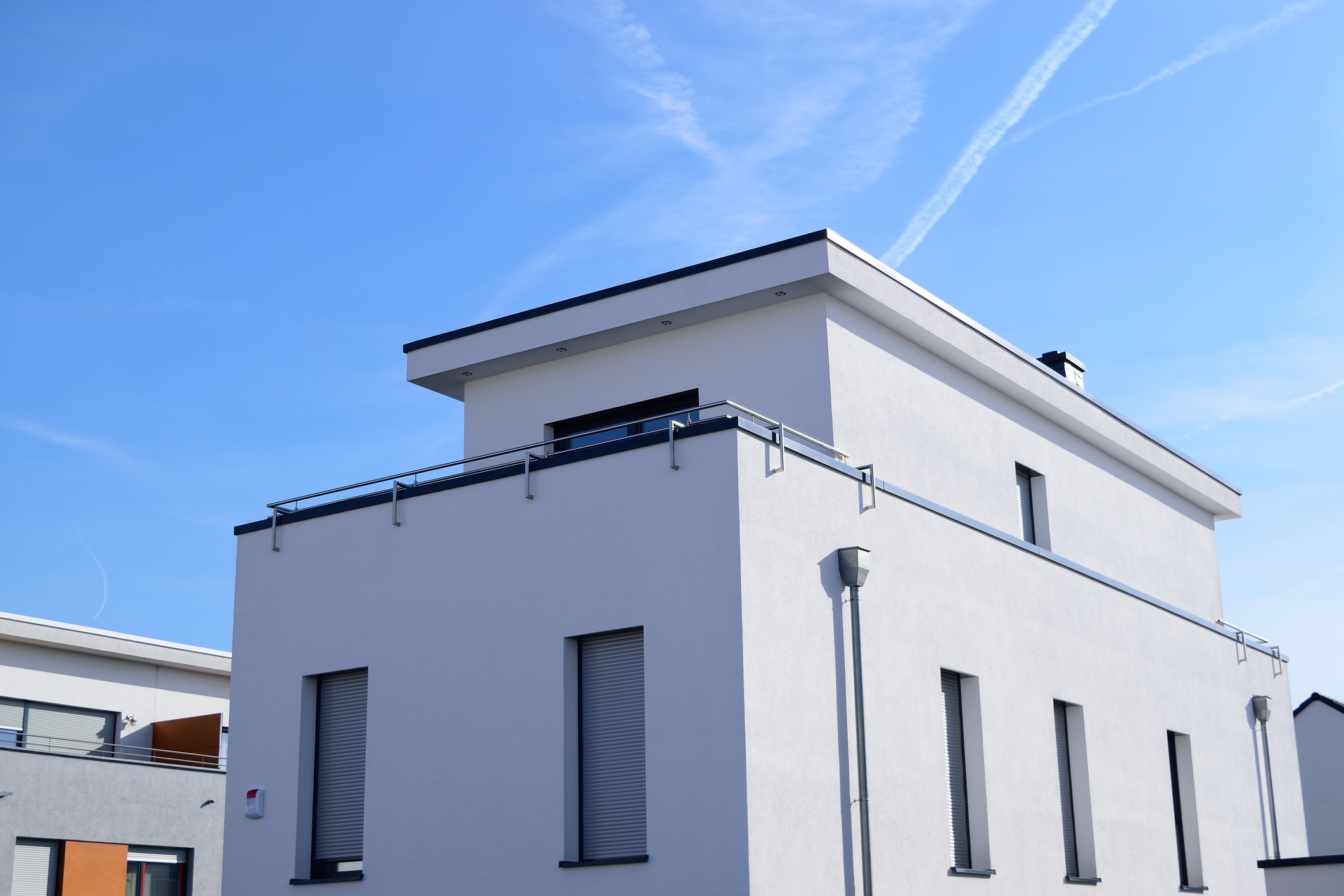
High Winds Also Create Problems for Flat Roofed Houses
For flat roofed homes, wind is another concern. Unless your builder takes proper precautions, wind lifts can occur—that’s where the roof of your home is literally lifted off its mechanical fasteners.
This usually happens when the installer uses the wrong kind of nail or screw to attach the roof material in place. In fact, sometimes, roofers may only use staples, which is not appropriate at all. If you’re in the market to have your flat roof replaced and you live in an area with high winds, make sure to ask your installer how they plan to prevent lifts.
Ice Dams Can Form When Flat Roof Houses Are Not Properly Insulated
In most flat roofed homes, heated spaces are situated directly under the roof, without any buffer from an unheated attic. This can eventually cause problems with ice dams. These are created when heat transfer from a home’s interior melts the snow on a roof—which then refreezes as it makes its way to the outer edges of the roof’s surface, where it is colder.
Ice dams almost always indicate problems with insulation or ventilation. The good news is that if you have a flat roof, you should be able to add rigid foam insulation under the surface to prevent ice dams. Rigid foam typically insulates more effectively than fiberglass, and it improves heating and cooling efficiency, too. Another idea is to have your roofer install an ice-and-water shield during a reroofing project—that’s a waterproof membrane underlayment that protects your roof from the effects of ice and rain.
Altogether, you may have to take some special care with your cold-weather flat roof, but then again, all roofs need maintenance to keep them in good shape, no matter the style or climate. So let the elements do their worst!
Find the Right Contractor for Your Roofing Project
Whether you’re ready to begin your project now or need some expert advice, our network of contractors are here to help. With a few simple questions, we’ll find the best local professionals for you
Reviews from Real Homeowners
Welcome to Homeowner Resources! We are the Modernize blog. Modernize pairs more than 3 million homeowners a year with pre-vetted contractors in their area. This blog started because we believe homeowners should know everything about their homes, from how their HVAC works to which front door colors they might love. On Homeowner Resources, you can find information on every part of your home, right down to how you can negotiate with contractors to get the best price. Here's more about the blog.
Need a contractor? Learn more about how Modernize finds the right pro for you.
